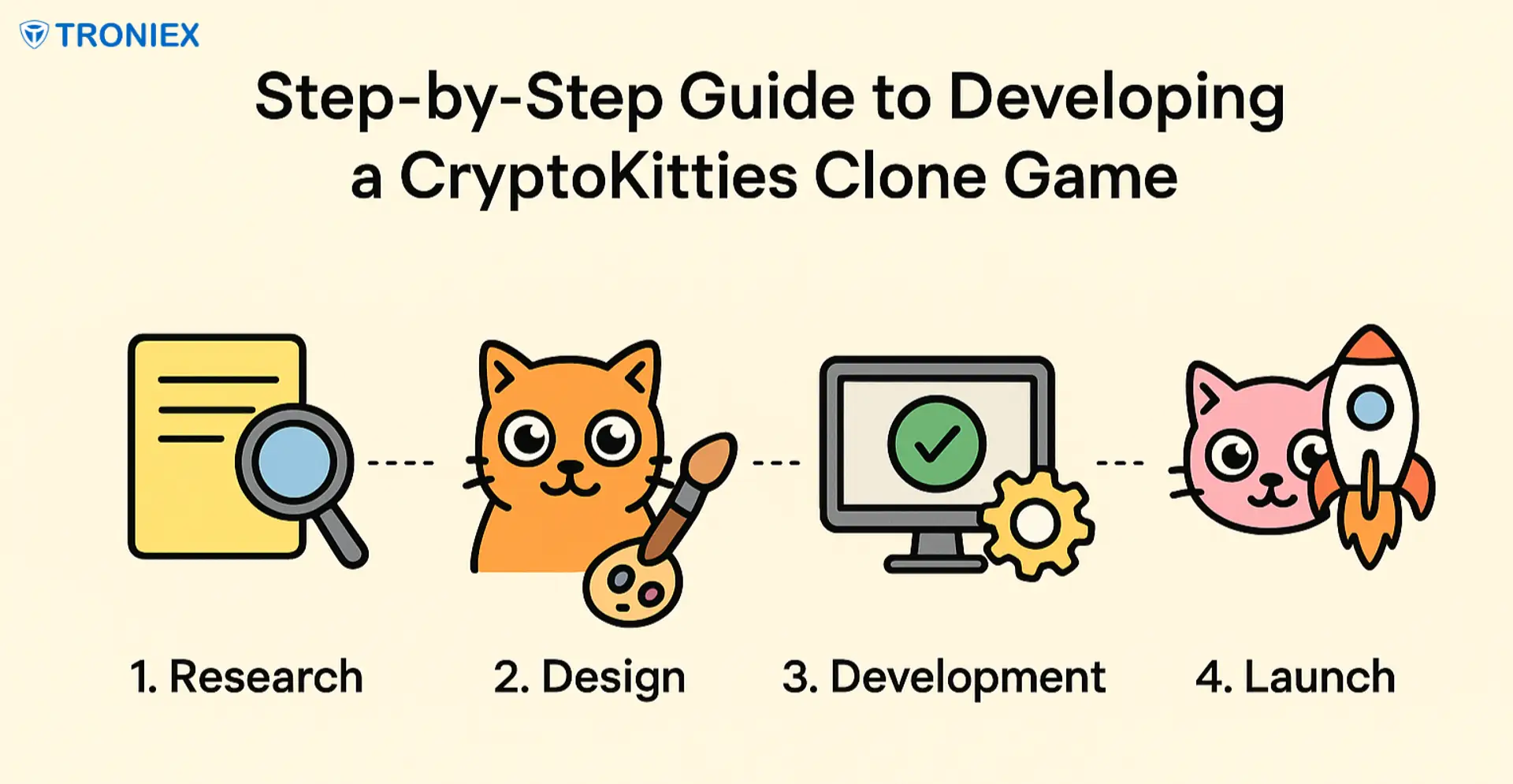

Step-by-Step Guide to Developing a CryptoKitties Clone Game
The blockchain gaming industry has seen tremendous growth since the launch of CryptoKitties in 2017. This pioneering game introduced the concept of non-fungible tokens (NFTs), where players could collect, breed, and trade unique digital cats. If you’re considering building your own CryptoKitties clone game, this step-by-step guide will help you understand the process.
1.Define Your Game Concept
Before diving into development, you must clearly define the mechanics of your game. Will it be about cats, dragons, aliens, or something entirely different? Decide on:
NFT elements: Which traits will make each character unique?
Gameplay mechanics: Will players only collect and trade, or will there be breeding, battling, or tournaments?
Revenue model: Think about transaction fees, NFT sales, or marketplace commissions.
2.Choose the Right Blockchain
Your choice of blockchain directly impacts transaction costs, speed, and scalability. Ethereum popularized NFTs, but alternatives like Polygon, BNB Chain, Avalanche, or Flow offer lower gas fees and faster processing. Evaluate:
Network fees
Smart contract compatibility
Community support
Developer tools and resources
3.Design Game Assets
NFT games thrive on visual appeal. Your designers need to create engaging digital assets that players will want to own and trade. Key steps:
Develop base characters and unique traits (colors, patterns, accessories).
Use layered asset design so traits can combine into infinite variations.
Consider animations or 3D models for added engagement.
4.Develop Smart Contracts
Smart contracts are the backbone of your CryptoKitties clone. They ensure each in-game asset is unique, traceable, and owned by players. Essential contracts include:
NFT minting (ERC-721 or ERC-1155 standards).
Breeding mechanics or other unique asset generation rules.
Marketplace functionality for buying, selling, and trading assets.
Make sure your contracts are audited for security to avoid vulnerabilities.
5.Build the Game Backend
The backend manages game logic and player interactions. Components include:
APIs for connecting the game frontend to blockchain smart contracts.
Player authentication and wallet integration (MetaMask, WalletConnect).
Game logic for breeding, trading, or battling.
Using Node.js, Python, or Go can streamline backend development.
6.Create the Frontend
The frontend is what players interact with. A smooth, engaging user experience is crucial. Consider:
Responsive web and mobile design.
Integration with blockchain wallets.
Dashboards for player profiles, NFT collections, and marketplace activities.
Frameworks like React.js or Vue.js are widely used in blockchain games.
7.Testing and Deployment
Before launch, conduct thorough testing:
Unit testing for smart contracts.
User testing for gameplay.
Load testing to handle high traffic.
Once tested, deploy your smart contracts to the mainnet and launch your game platform.
8.Post-Launch Updates and Community Building
A successful NFT game thrives on an active community. Engage players through:
Regular content updates (new characters, traits, or features).
Social media and Discord communities.
Reward systems like tournaments or staking.
Final Thoughts
Developing a CryptoKitties clone game is not just about copying an idea, it’s about innovating on a proven model. With careful planning, engaging design, and robust smart contracts, you can create a blockchain game that attracts players, collectors, and investors alike.
Related Posts
© 2025 Invastor. All Rights Reserved

User Comments